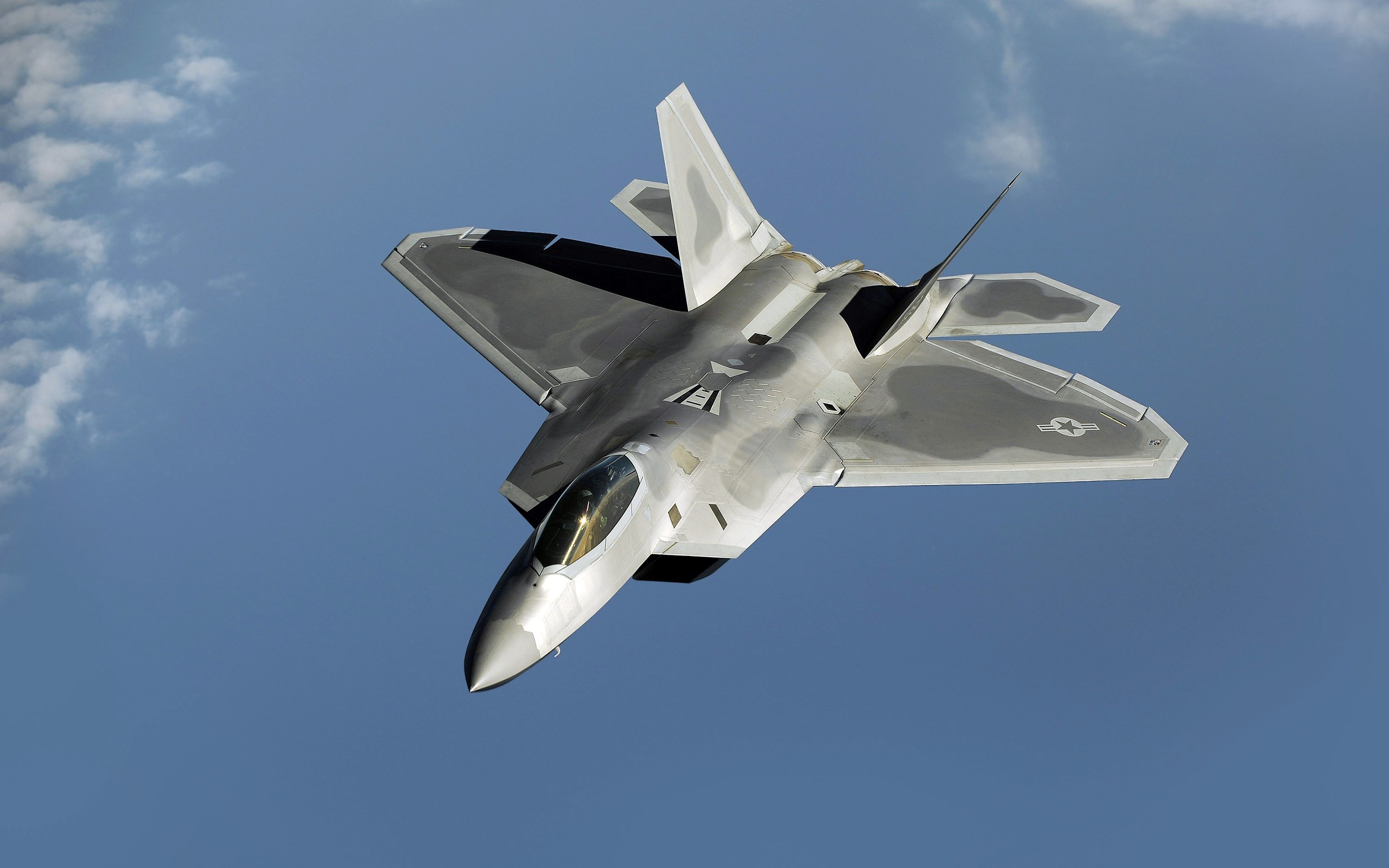History
The F-22 Raptor, developed by Lockheed Martin and Boeing, emerged from the Advanced Tactical Fighter (ATF) program initiated in the 1980s to counter Soviet threats and maintain air dominance. The YF-22 prototype won the competition against Northrop’s YF-23 in 1991. The F-22 first flew in 1997 and officially entered service in 2005.
With supercruise capabilities, stealth technology, thrust-vectoring, and advanced avionics, it redefined air superiority standards. However, post-Cold War budget constraints and a shift in focus to counterinsurgency led to the program’s early termination, with only 187 combat aircraft produced. Despite this, the F-22 remains one of the most advanced and lethal fighters ever built.
 F-22 Raptor during training exercises
F-22 Raptor during training exercises
Design and Features
The F-22's unique shape, radar-absorbent materials, and internal weapons bays ensure minimal radar signature. It features two Pratt & Whitney F119 engines capable of supercruise—sustained supersonic flight without afterburners. Its sensor suite provides pilots with unmatched situational awareness via data fusion and advanced radar systems.
Internally, the Raptor integrates the AN/APG-77 radar, electronic warfare systems, and data links that enable network-centric operations. Its cockpit uses a glass display system and a helmet-mounted display was considered, although never implemented in production models.
Specifications
| Length: | 62 ft 1 in (18.92 m) |
| Wingspan: | 44 ft 6 in (13.56 m) |
| Max Speed: | Mach 2.25 (1,500 mph, 2,414 km/h) |
| Range: | 1,600 nmi (1,840 mi, 2,960 km) |
| Armament: |
|
Notable Operations
The F-22 saw its first combat deployment in 2014 during Operation Inherent Resolve against ISIS in Syria. It has primarily been used for air dominance missions and has never been shot down in combat. The Raptor's advanced stealth capabilities allow it to operate in heavily defended airspace.